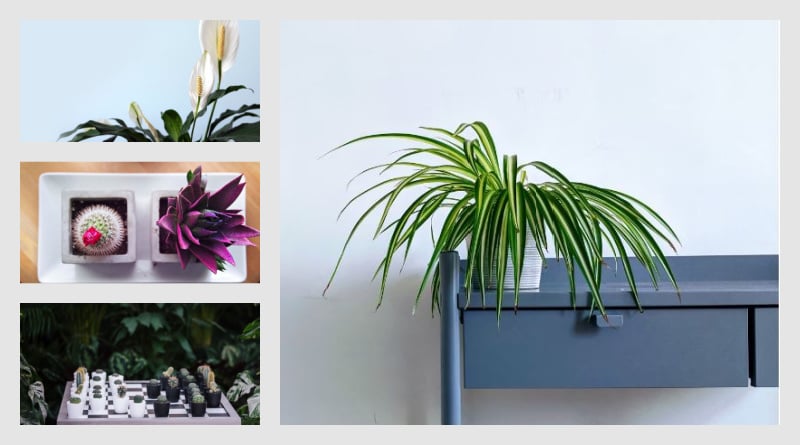The Importance of Proper Watering: Keeping Your Houseplants Healthy
When it comes to caring for houseplants, one of the most crucial aspects is watering. While it may seem intuitive to keep your plants well-hydrated, overwatering can be just as harmful—if not more so—than underwatering. Understanding the right balance can help your plants thrive, enhancing both your home environment and your well-being. Let’s dive into why it’s important not to overwater your plants, which plants struggle with excess moisture, and some fantastic indoor plants that provide health benefits.
Why Not to Overwater Your Plants
1. Root Rot
One of the most common consequences of overwatering is root rot. This condition occurs when the roots sit in waterlogged soil, depriving them of oxygen. Fungi thrive in such conditions, leading to decay. Once root rot sets in, it can be difficult to save the plant, and in many cases, it may be too late.
2. Nutrient Deficiencies
When plants are overwatered, essential nutrients in the soil can wash away. This can lead to deficiencies that result in stunted growth, yellowing leaves, and an overall unhealthy plant. Nutrient availability is vital for photosynthesis and plant vitality.
3. Stress and Vulnerability
Plants that are overwatered may become stressed and more susceptible to pests and diseases. A weakened plant is less able to fight off invaders or recover from other stresses, leading to a cycle of decline.
4. Unpleasant Odors
Waterlogged soil can produce foul odors due to the decomposition of organic material and the presence of harmful bacteria. This not only affects the plant but can also lead to unpleasant smells in your home.
5. Poor Aesthetic
Finally, overwatering can lead to poor plant aesthetics. Droopy leaves, yellowing foliage, and an overall unhealthy appearance can detract from your home’s beauty and reduce the enjoyment you get from your plants.
Plants That Can’t Take Too Much Water
Certain plants are particularly sensitive to excess moisture. Here are a few that you should be cautious with:
1. Snake Plant (Sansevieria)
The Snake Plant is known for its resilience, but it can’t tolerate soggy roots. It prefers to dry out between waterings, making it a great option for beginner gardeners.
2. Pothos (Epipremnum aureum)
Pothos is another easy-care plant, but overwatering can lead to root rot. Allow the top inch of soil to dry out before giving it a drink.
3. Succulents
Succulents, such as Aloe Vera and Echeveria, store water in their leaves, making them highly susceptible to overwatering. These plants thrive in well-draining soil and need less frequent watering.
4. ZZ Plant (Zamioculcas zamiifolia)
The ZZ Plant is nearly indestructible but prefers its soil to dry out completely between waterings. Overwatering can lead to mushy stems and leaves.
5. Cacti
Like succulents, cacti require very little water. Too much moisture can lead to rot and ultimately the demise of the plant.
The Benefits of Properly Watering Your Plants
While overwatering can have detrimental effects, proper watering offers numerous benefits:
1. Enhanced Growth
Adequate hydration is essential for plant growth. Water is crucial for photosynthesis, the process through which plants convert light into energy. Proper watering supports robust growth and lush foliage.
2. Improved Air Quality
Many houseplants purify the air by absorbing toxins and releasing oxygen. Plants like the Spider Plant and Peace Lily can help reduce indoor pollutants, improving the air quality in your home.
3. Stress Relief
Caring for plants can be therapeutic. Watering and tending to your greenery can help reduce stress and create a calming atmosphere in your home.
4. Humidity Regulation
Plants release moisture into the air through a process called transpiration. This can help increase humidity levels in dry environments, benefiting both plants and humans.
5. Aesthetic Appeal
Healthy plants add beauty and vibrancy to any space. They can transform your home into a more inviting and lively environment.
Great Indoor Plants for Your Home
When it comes to choosing indoor plants, consider those that offer both aesthetic appeal and health benefits. Here are a few excellent options:
1. Spider Plant (Chlorophytum comosum)
The Spider Plant is incredibly resilient and easy to care for. It thrives in various light conditions and can remove pollutants like formaldehyde and xylene from the air. Plus, its cascading leaves add a touch of elegance to any room.
2. Peace Lily (Spathiphyllum)
Known for its striking white flowers, the Peace Lily is also an air purifier. It can help reduce toxins like ammonia and benzene, making it a beautiful and beneficial addition to your home. Just be careful not to overwater it!
3. Aloe Vera
Not only is Aloe Vera easy to care for, but its gel can also be used for soothing burns and cuts. It prefers well-draining soil and infrequent watering, making it ideal for those who may forget to water regularly.
4. Boston Fern (Nephrolepis exaltata)
Boston Ferns thrive in high humidity and can help improve indoor air quality by removing toxins. They require consistent moisture, but avoid soggy soil to keep them healthy.
5. Rubber Plant (Ficus elastica)
The Rubber Plant is known for its glossy leaves and can grow quite tall, making it a great statement piece. It can help purify the air and prefers to dry out between waterings, making it relatively low-maintenance.
Tips for Proper Watering
Check the Soil: Always check the top inch of soil before watering. If it feels dry, it’s time to water; if it’s still moist, wait a few more days.
Use Drainage: Ensure your pots have drainage holes. This helps excess water escape, preventing root rot.
Water Deeply: When you water, do so thoroughly to encourage deep root growth. Water should flow out of the drainage holes.
Adjust Seasonally: Plants typically need less water during the winter months when they are not actively growing. Adjust your watering schedule accordingly.
Observe Your Plants: Pay attention to your plants. Yellow leaves may indicate overwatering, while brown, crispy leaves can signal underwatering.
Remember properly watering your plants is essential for their health and vitality. Overwatering can lead to a host of problems, while the right amount of water can promote growth, improve air quality, and enhance your well-being. By choosing the right plants and following some simple watering guidelines, you can create a thriving indoor garden that brings beauty and health benefits to your home. Happy gardening!





Thank you for sharing this list of plants that can’t take too much water. This is good to know since I don’t have a green thumb. We are planning to add some indoor plants at home. I am considering adding some Boston Fern since you mentioned that it can help improve air quality.
Ooohhhh…I didn’t know that overhydrating these plants can make their roots rot. I’ve just thought of it now and it made sense, actually.
Your insights on houseplant care are incredibly helpful! Proper watering makes such a difference in keeping them thriving. I found the tips on signs of overwatering particularly useful.
I remember we had this huge house plant at home, and watching my mum water it and cutting the dead leaves out daily confused me. But it later became one of my imaginary friends. Thanks for the tips.
These are some amazing tips for houseplants! I recently bought a peace lily and was searching for how often to water it, overwatering can be a real trouble, I absolutely agree!
What a great help list! I do not think many people are aware of the timing and amount of watering needed to keep houseplants thriving.
These are important to maintaining good plants indoors, and interesting options as well for people looking for new plants. My cousin has some plants and I know my cousin would be interested in reading this. Thank you for sharing.
I really love to have plants in the home, they not only look great they really do help reduce stress. I try not to overwater them although it doesn’t help when the kids decide to water them too.
This article is incredibly helpful for indoor plant enthusiasts. You’ve provided excellent tips on selecting the right plant types and caring for them. Will have to pick up an aloe plant for the kitchen!
Thanks Lisa! We have two plants that have made it through some tough years with my sporadic watering: Boston Fern and spider plant. With your guide, you’ve inspired me to be better!
Great tips on keeping our leafy friends happy and healthy! I love how proper watering can make such a big difference in our home environment!
My teen just made a plant holder in pottery. The teacher filled it with dirt and put a plant in it. Such a cute surprise! Now we are caring for it and being careful not to over/under water it.
It is important to know how to water plants. I know a lot of people that see their plants drooping and keep watering (overwatering). There are a lot of plant quirks to learn!
I am a cacti fan! I love that it doesn’t require too much maintenance. I have killed too many other plants in my past because of too little or too much watering. I have to try a succulent and see how I fare on that one!
Maureen | http://www.littlemisscasual.com
I love so many of these picks! Our family travels a lot so plants that can thrive without requiring a ton of care are perfect for me.
We have a spider plant that we bought 30 years ago. That thing is HUGE. They live for so long if you take care of them.